The 5 New Watches You'll Want to Wear Every Damn Day
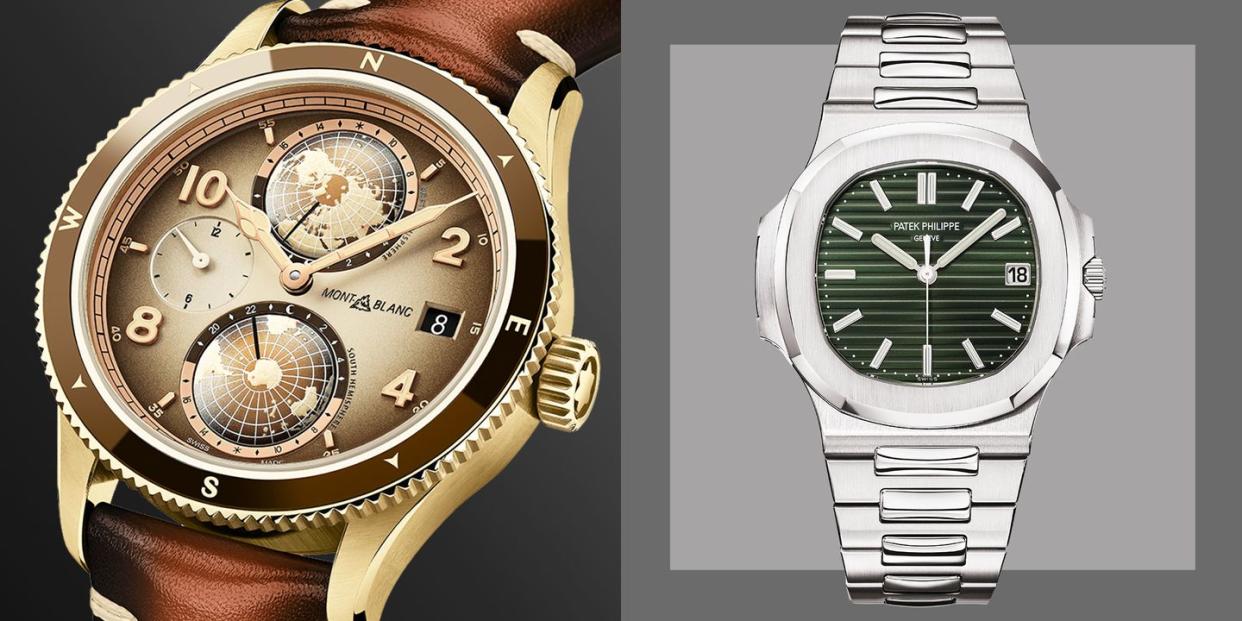
Welcome to Dialed In, Esquire's column bringing you horological happenings and the most essential news from the watch world since March 2020. This week, we're working with the Fondation de la Haute Horlogerie as Media Partner of Watches and Wonders Geneva. Visit Watches and Wonders' website for news and video panels daily, and keep checking back here for all the updates you need to know about.
To wind up our week-long coverage of Watches and Wonders Geneva, we focus on some of the best watches to emerge from our favorite brands, representing all aspects of the watch industry from affordable daily beaters to the pinnacle of technical and aesthetic ingenuity. While the pandemic hindered the flow of new watches in 2020, this year’s digital edition showed it did nothing to limit the possibilities. And if anything, it engendered a new sense of the why not, posting playful takes on old favorites, and innovating with a new feeling of optimism. Just what we need right now.
Longines Legend Diver
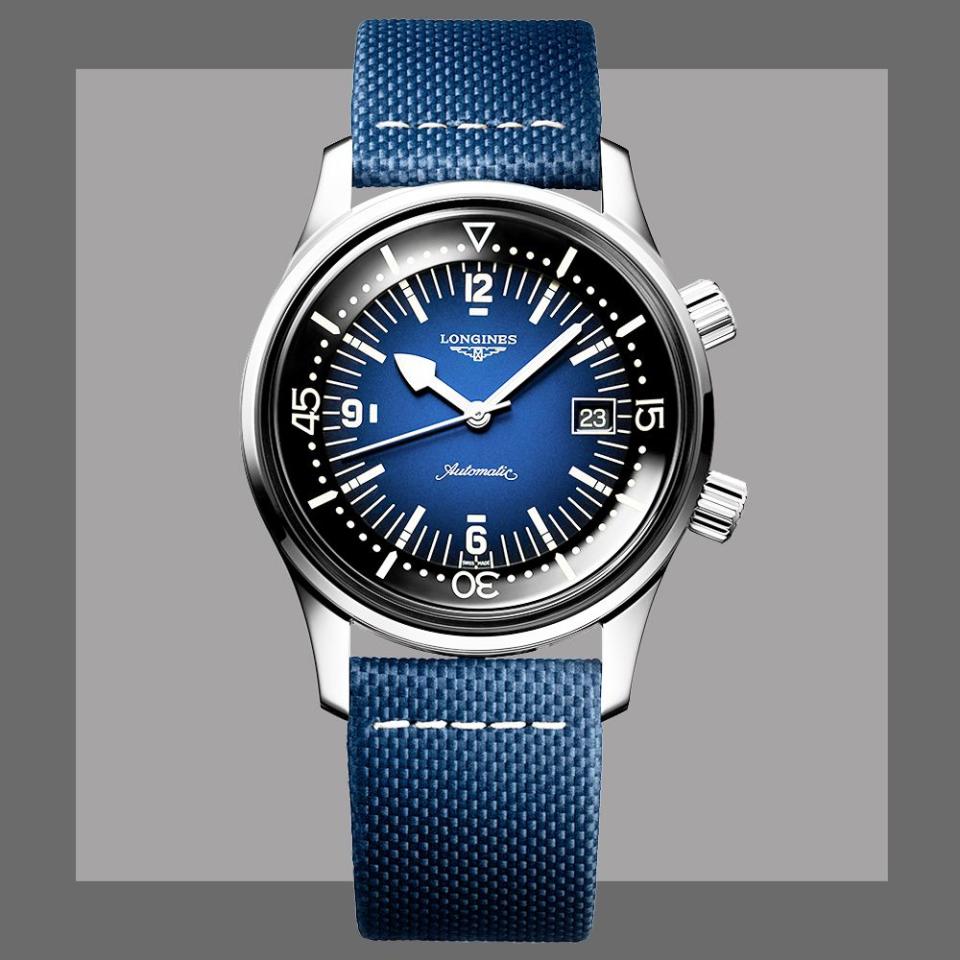
Fans of the diving watch are accustomed to chunky steel bezels making pleasingly clunky clicks as they turn them—for many it’s the mark of a good diver. The dive time marker is a given on a dive watch. In fact it’s one of the strict requirements if a dive watch is to pass the ISO 6425 standard for professional dive watches. But as a handful of brands have discovered over the years, there is another nifty way to display the dive time: on the inside. These distinctive watches are known as compressor watches, and offer a distinctly more elegant alternative to the chunkier diver. A second screw-down crown usually around the 2 o’clock mark is used to rotate the internal bezel ring.
The 42mm Longines Legend Diver ($2,300), which emerged in new colorways recently, dates back to its creation in 1964. The black-dialed ref 7494 (also in 42mm) originals are highly prized by Longines fans and regularly reach more than three times the price of a new one. The watch was reissued as a pillar of Longines’ Heritage collection in 2007. The new dial colors are brown and blue in gradients that darken out towards the edges, giving a real sense of visual depth. Rated to 300m water resistance, the watch carries the same engraving on the case back that graced the originals, a scuba diver.
Oris Cotton Candy
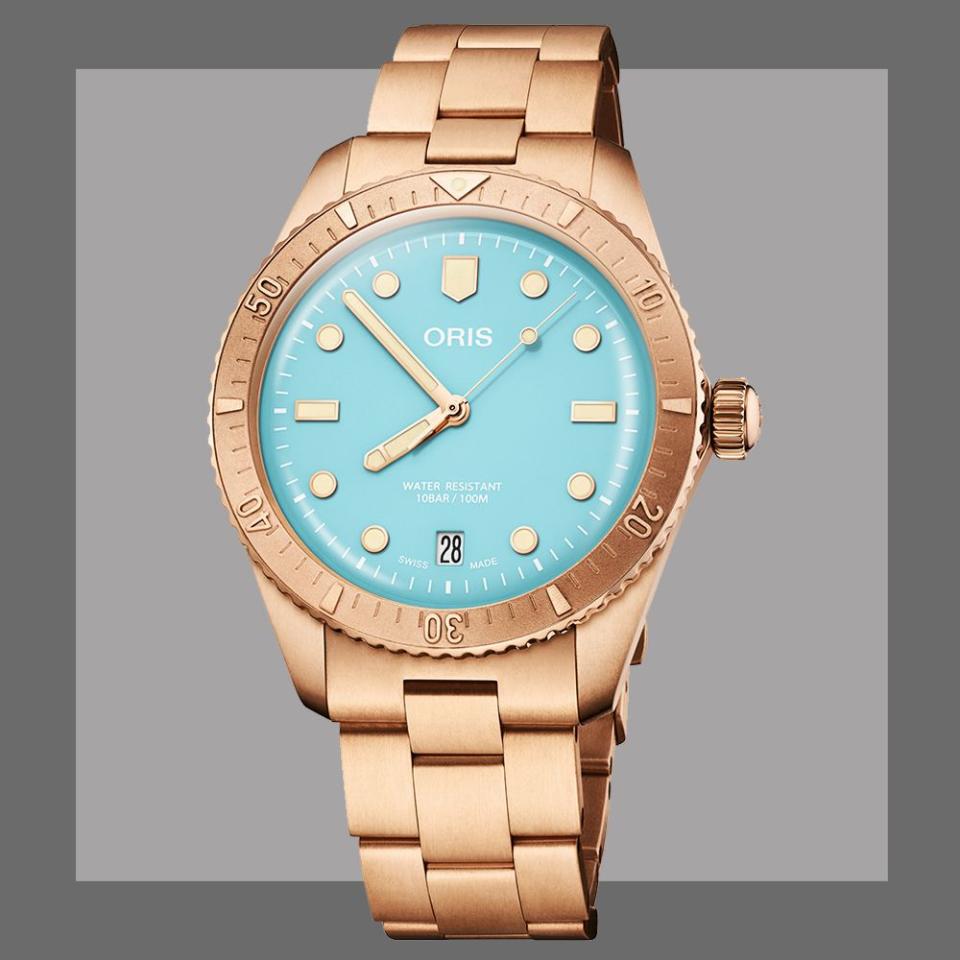
You kind of know when it’s a big year for dive watches. Because frankly, every year is a big year for dive watches. There is something indefinably right about the heritage and authenticity of a watch that has its aesthetics rooted in the lifesaving functionality of a chunky diver. But very occasionally all that authenticity can be, well, a little shall we say, serious. Diver specialist Oris took a different view this year, opting for a line of bronze divers in its classic Diver 65 line but using decidedly unprofessional dial colors.
Sky blue, lipstick pink, and minty green gives a whole fresh new optimistic summer vibe when played against the rich patina of the bronze case, bezel, and crown whose design was first used in the Hölstein special-edition Diver 65 last year. In a smaller, deliberately unisex size of 38mm (watches that are women-inclusive is a horological hot potato right now), this automatic watch is 100m dive rated and features all the hallmarks of its more serious Oris cousins. Oris is one of those rare secrets in watchmaking, a brand hiding in plain sight, that offers long heritage, deep authenticity, and lashings of style at often very-compelling prices. This one, available on World Oceans Day on June 8, comes with leather strap ($2,450) or a bronze bracelet ($2,750). We say skip the leather and go full bronze.
Montblanc 1858 Geosphere Limited Edition 'Gobi Desert'
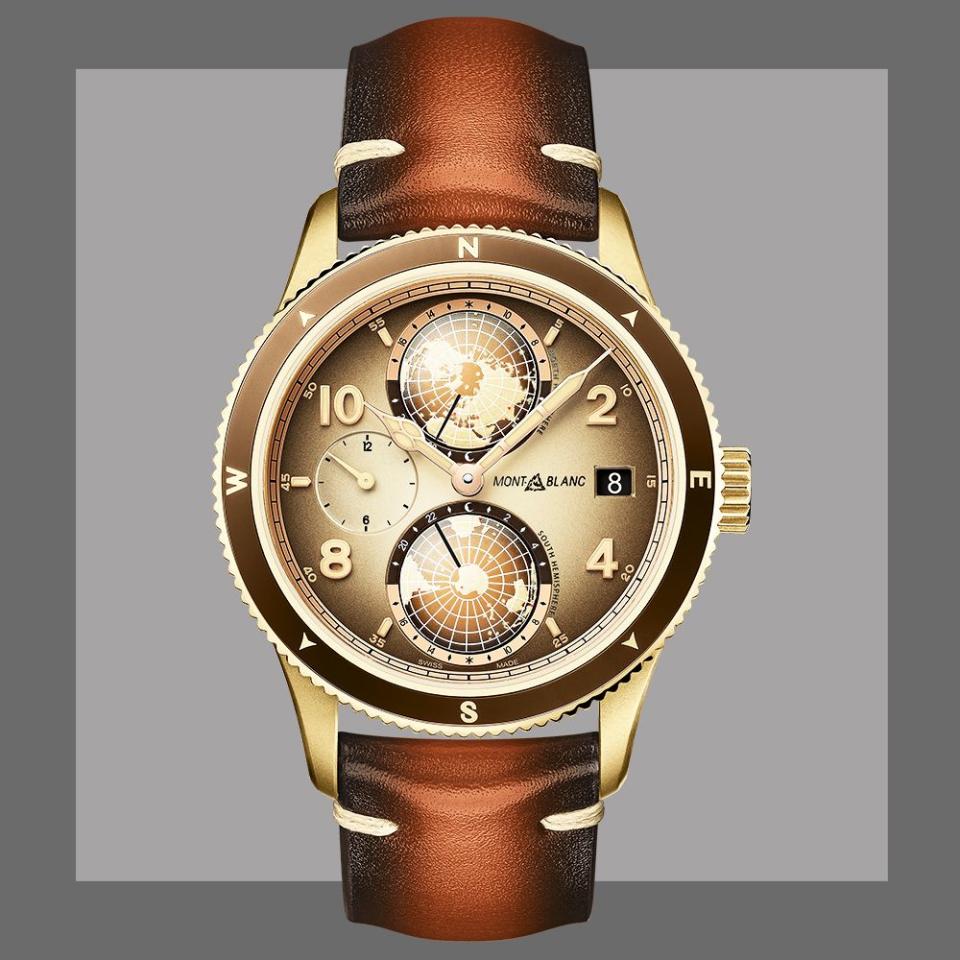
The Montblanc 1858 Geosphere Limited Edition "Gobi Desert" is a lesson in ingenuity and creativity. It was inspired by a journey undertaken by veteran Italian explorer and mountaineer Reinhold Messner. Messner’s habitat, typically, is vertical: the high mountains of the Alps and the Himalayas. He was in fact the first to climb all 14 peaks over 8,000 meters, completing the challenge in 1986. In 2004 he gave himself a more horizontal challenge: to walk 2,000 kilometers solo across the Gobi desert of Mongolia. This third iteration of the Geosphere pivots, like Messner did, from mountains to deserts (previous editions included 2020’s Alpine-inspired blue and white version created with Messner) with a color scheme created from a bronze case, lacquered cream, and smoky brown dial and a matching smoky brown leather strap.
What is most striking is the two mapped hemispheres: one for the northern hemisphere one for the southern. These track time just like an hour hand, with one rotating clockwise and the other counterclockwise, both tracking 24-hour time. A second timezone counter is at 9 o’clock. You really need time to take in all that’s going on the dial. When you’ve done that, flip the thing over to reveal a unique piece of artwork whose creation is a first for any watch house on this scale. The titanium case back is engraved with a view of the Flaming Cliffs, a remote rocky outcrop deep in the Gobi encountered by Messner on his trek. A single piece of titanium etched and then laser-oxidized at various (and very high) temperatures, each one creating a different—and permanent—shade. All this workmanship would lead one to expect a sky-high, five-figure price for this unique watch. In fact, as a mainstay of the Heritage 1858 collection, it is remarkably affordable at $6,500.
Nomos Glashutte Club Campus
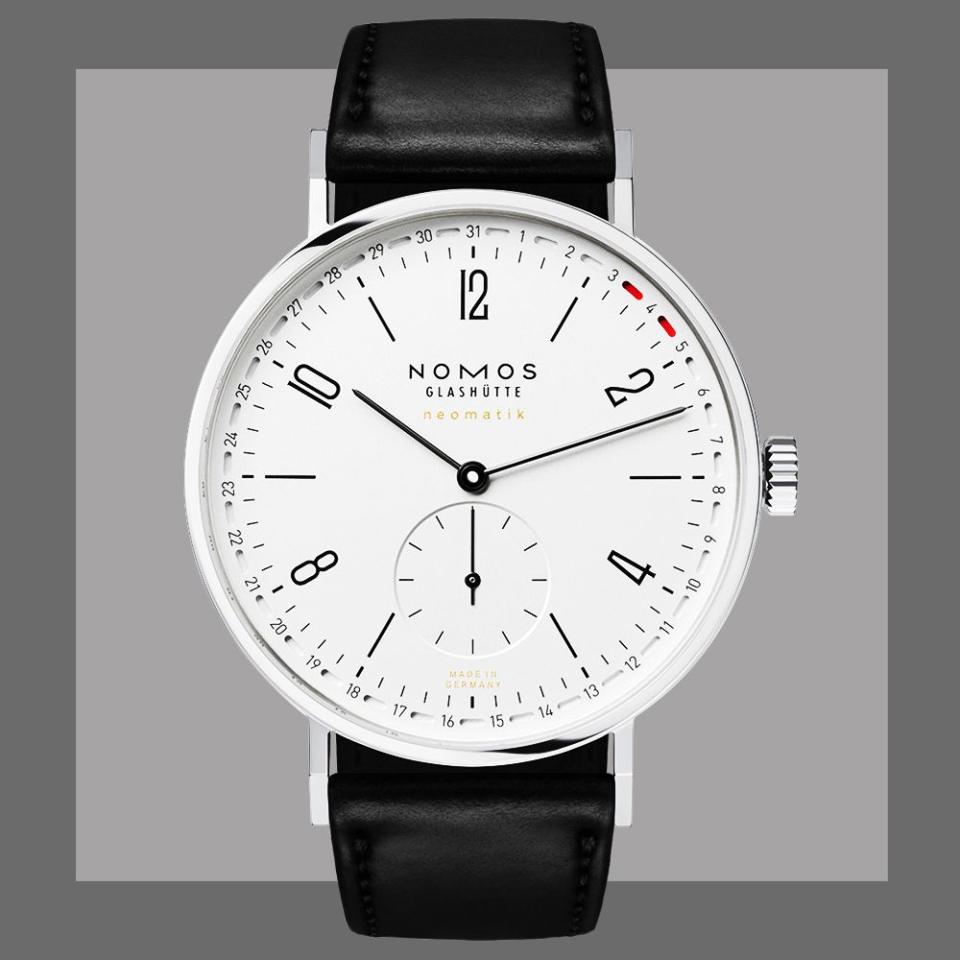
It used to be an accepted milestone, receiving a watch on graduation. As watch prices spiraled past the kind of numbers accessible to most parents, let alone students, the expectation of getting a memorable watch as you stepped out of the cosseting halls of academe and into an uncertain unemployed future disappeared. The graduation gift went in favor of taking a bite out of your loan repayment. But Nomos Glashütte, a German brand with a reputation for clean design that has garnered well over a hundred awards since it launched in 1990, has other ideas.
In 2017 it introduced a line called Club Campus, a 36 or 39mm watch priced to suit cash-strapped grandmas or first-time watch owners themselves. This month, the brand introduced two striking new colorways. The watch now comes in two new colors, bright orange or a glacial gray. Both have unusual “California” dials, with a combination of batons interspersed with Arabic numerals on the top half and roman on the bottom half, definitely something to remember a milestone by, even if you bought it for yourself.
Nomos has long been thought a very well-priced proposition for a brand that uses in-house movements, a clean Bauhaus-like design language with the occasional twist. With the Campus Club the ceiling is set at $1,500, something of a psychological dollar barrier for many in the US. To save on cost, Nomos doesn’t use its newest movement, and the case back does not show it off. But that gave Nomos another idea, a free in-house service to engrave the case back with up to 88 characters, like a note from your proud mom.
Patek Philippe Nautilus
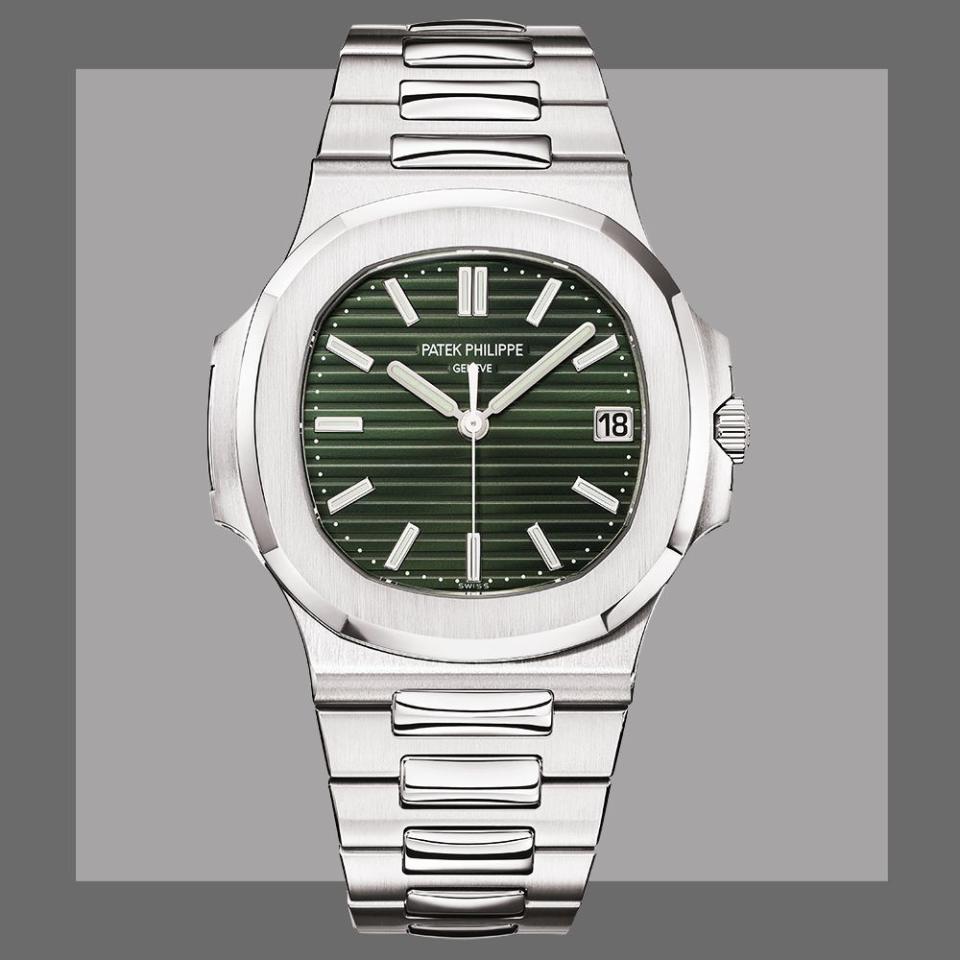
There’s no better way to conclude Esquire’s coverage of the weeklong Watches and Wonders than with Patek Philippe, for many the ne plus ultra of Geneva watchmaking. Two things keep Patek Philippe at the top of its game. First, a reputation for excellence. Second, an unshifting sense of good taste in precious metals. Wait, there’s a third: never giving a fig about trends. As a result, even the smallest change in the repertoire gets massive attention.
To wit, a new Nautilus in steel with an unmissable olive green dial. Green is rarely the commercial rollercoaster that follows the launch of a blue dial, even if it shakes things up a bit. But with the 40mm ref 5711, such considerations are generally moot, as fans of the 5711 will doubtless rush to snap them up. The horizontal sunburst banding on the dial contrasts beautifully against the vertical brushing of the case. The steel version ($34,893) was launched with another, more upscale version, also in steel but set with pave diamonds around the bezel ($92,624). In other Nautilus news, the Travel Time Chronograph that was a big hit in 2014 when it debuted in steel this week appeared in rose gold with a matching bracelet and a blue sunburst dial. The chronograph complications and all that gold put the Travel Time up there over the $100,000 mark ($106,542, to be exact)—something that will not phase the Nautilus fans.
You Might Also Like

